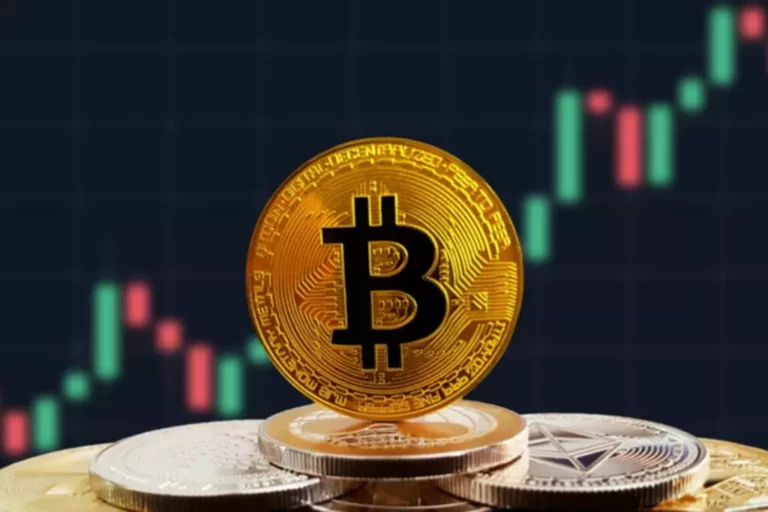
What Is An Amm Automated Market Maker & How Does It Work?
A significant slice of this liquidity turns into out there only when the pricing curve turns exponential, which means that virtually all of it stays unused by rational traders because of excessive price impacts. Every AMM uses a set mathematical method that helps determine the worth of assets within the AMM’s liquidity swimming pools. Every time a user desires to commerce a token on an AMM, they add an asset to the liquidity pool. As it adjustments the constant, say k, the value of the belongings is determined to maintain the steadiness of the pool. This is the place costs on AMMs can differ from the more fixed ones trading on exchanges.

The AMM model has seen exponential growth in the crypto space, with platforms like Uniswap and Balancer main the cost. The whole value locked in AMMs has skyrocketed, indicating their increasing popularity. Scalability remains a problem for so much of DeFi platforms, including AMMs.
Worth Slippage
It’s essential for anyone seeking to interact with AMMs to know these risks and conduct thorough analysis. Each trade that happens within a pool comes with a payment, which is then distributed to liquidity suppliers based on their share of the pool. The sensible contract mechanically adjusts the value of the tokens primarily based on provide and demand, guaranteeing constant liquidity and market effectivity. It’s centralized, that means it relies on specific entities to offer liquidity. It’s also unique, as changing into a market maker often requires significant capital and access to classy buying and selling methods. In contrast, AMMs, prevalent in DeFi, use algorithms to set costs and facilitate trades.
Automated Market Makers (AMMs) have emerged as a cornerstone in the growing DeFi (Decentralized Finance) market, altering the fundamentals of assets buying and selling in a decentralized surroundings. The Constant Sum Market Maker (CSMM) is one other sort, finest fitted to trades with zero price impact. However, it does not supply infinite liquidity, a limitation in sure buying and selling situations. When a user submits a request to complete a transaction, the Kyber smart contract conducts the transaction by way of a reserve entity, selecting one of the best rate for the user.
Some AMMs are exploring the integration of NFTs into their platforms, permitting customers to commerce and provide liquidity for NFT-based property, further increasing the scope of decentralized buying and selling. Price discovery in Automated Market Makers (AMMs) differs essentially from traditional monetary markets. In AMMs, costs are not set via an order e-book however are determined algorithmically based mostly on the belongings within the liquidity swimming pools. Users can present liquidity to AMMs with various amounts of capital, making it an inclusive option for individuals in search of passive income opportunities. Furthermore, AMMs provide continuous liquidity provision, guaranteeing that trades may be executed at any time with out dependence on exterior market members. Finally, AMMs address the problem of impermanent loss, which refers to potential losses faced by liquidity suppliers as a outcome of token worth volatility.
Potential Risks And Challenges
They changed the order guide model with a mathematical formula to determine the value of property. For traders, automated market makers make it potential to instantly commerce one asset for one more in a decentralized buying and selling setting. Automated market makers (AMMs) permit users on a decentralized change to mechanically commerce without permission using liquidity swimming pools. AMMs are primarily designed to provide efficient and cost-effective buying and selling options for long-term buyers and liquidity suppliers. Yield farming, a well-liked practice within the DeFi ecosystem involves staking and lending property to generate returns.
The worth of these tokens is ready by a predefined mathematical algorithm. These liquidity swimming pools serve diverse functions and have become a vital device throughout the DeFi sector. An AMM works like a decentralized change amms meaning powered by good contracts and a mathematical formula used to discover out the assets’ value. Simply, an AMM facilitates automated trading by creating or, quite, making a market with high token-based liquidity.
Now, if the supply of ETH is greater in the pool as a end result of people buying lots of USDT for ETH, the value of ETH might be lower than the market’s $1,900. This worth difference is what gives rise to an arbitrage buying and selling opportunity. If you want to commerce artificial assets that characterize real-world belongings like shares and even gold, you can contemplate Synthetic AMMs like Synthetix. The pooling nature of belongings to make sure the ones that belong to others is at the coronary heart of insurance coverage AMMs. Imagine there is a fish market where the prices of fish fluctuate relying on demand and supply. If the next number of a particular fish floods the market, the supply increases, pushing the prices down.
Automated Market Makers (AMMs) have revolutionized the crypto trading panorama, providing a decentralized and environment friendly alternative to traditional market-making. This article delves into the intricacies of AMMs, their history, how they work, and their significance within the crypto world. Where `x` and `y` characterize the amounts of the 2 assets in a liquidity pool, and `k` is a continuing worth.
What Is A Digital Amm?
Automated Market Makers (AMMs) have advanced with various fashions, every addressing specific wants and challenges in the DeFi space. In line with the Trust Project pointers, the tutorial content material on this website is offered in good religion and for basic data purposes only. BeInCrypto prioritizes providing high-quality info, taking the time to analysis and create informative content material for readers. While companions could reward the corporate with commissions for placements in articles, these commissions don’t influence the unbiased, honest, and helpful content material creation process. Any motion taken by the reader primarily based on this info is strictly at their own danger.

AMMs enable digital belongings to be traded routinely by utilizing liquidity swimming pools somewhat than traditional market makers. For liquidity suppliers, automated market makers current a possibility to generate revenue by committing assets to a liquidity pool. AMMs use liquidity pools, the place customers can deposit cryptocurrencies to provide liquidity. These swimming pools then use algorithms to set token prices based mostly on the ratio of property in the pool. When a person wants to commerce, they swap one token for one more instantly via the AMM, with prices determined by the pool’s algorithm. AMMs solve this problem by creating pools of liquidity that can be contributed to by anyone.
How Does An Amm Work?
We have already described the calculation formula on the Uniswap protocol. There are a couple of AMMs that permit you to trade specific scenarios or even bet on particular event-related outcomes. Even the likes of Uniswap V3 and Bancor have specific mathematical calculations backing their algorithms. As seen, AMMs are in command of significantly more than simply dealing with trades and swaps. New use cases and marginal enhancements, both are required if we wish adoption.AMMs/Lending borrowing platforms are far from ripe for world adoption proper now. By staying informed and vigilant, you can safely navigate the world of AMMs and benefit from the alternatives they offer within the growing DeFi ecosystem.

These contracts automate the market-making process, allowing for the automated execution of trades. This automation eliminates the necessity for intermediaries, making the process extra environment friendly. In trade, LPs obtain LP tokens, which might fluctuate in worth based mostly on the trading activity and the overall efficiency of the liquidity pool. This innovation not only eases entry to financial markets but in addition enhances liquidity and buying and selling effectivity in the DeFi ecosystem. AMMs have already established a crucial position within the Decentralized Finance (DeFi) enviornment and are poised for continued development and evolution.
Since DeFi has such popularity now, it creates a model new wave of curiosity in AMMs. Overall, the know-how, which permits people to commerce and get rewards in decentralized and anonymous house, sounds engaging. Even though buying and selling on AMMs and decentralized exchanges could be enjoyable and according to the ethos of decentralization, even on-exchange trading comes with its share of benefits. These embrace higher liquidity at instances for the more elusive tokens, a regulated trading mechanism, fewer possibilities of good contract hacks, and more. Plus, this kind of buying and selling doesn’t render the market volatile in case some massive orders go through. Post UniSwap, several AMM-powered DEXs like PancakeSwap and SushiSwap have additionally surfaced.
The goal of PMMs is to make certain that the costs on these platforms mirror what’s occurring within the wider monetary market. Unlike conventional exchanges, there’s no central authority controlling the market. This decentralization is integral to the ethos of DeFi, guaranteeing that the system is more immune to censorship and central factors of failure. As the DeFi panorama continues to evolve, AMMs are set to play a pivotal role in shaping the future of decentralized finance. As we already mentioned, the worth of the tokens is decided by the steadiness ratio between two tokens within the pool.
CONTACT INFO
- Address : BackYard Miracles, Clarkson, WA Australia
- Phone : +61 408927884
- E-mail : [email protected]
- Website : backyardmiracles.com.au
DEVELOPED BY FUTURISTIC WEB MEDIA | Sitemap
